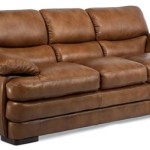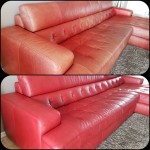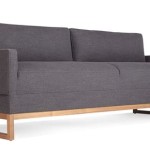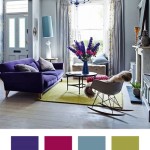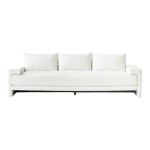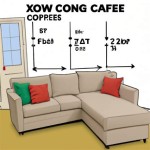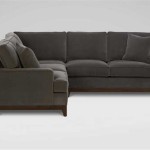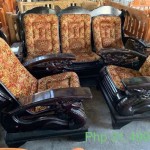Sectional Sofa Room Layout: Maximizing Space and Style
Sectional sofas offer versatile seating arrangements and have become a popular choice for living rooms, family rooms, and entertainment areas. Their modular design allows for customization to fit various room sizes and shapes. However, effectively integrating a sectional sofa into a room requires thoughtful planning and consideration of factors such as room dimensions, traffic flow, existing architectural features, and desired functionality.
This article explores key considerations for optimizing sectional sofa room layouts, providing guidance on selecting the appropriate sectional configuration, arranging furniture to enhance spatial harmony, and incorporating design elements that create a cohesive and inviting environment.
Key Considerations Before Purchasing a Sectional
Prior to purchasing a sectional sofa, a comprehensive assessment of the room is essential. This involves accurately measuring the space, identifying potential obstructions, and evaluating the existing architectural features that may influence furniture placement. Careful consideration of these elements ensures that the chosen sectional fits comfortably within the room without overwhelming the space or impeding movement.
Room Dimensions: The first step is to accurately measure the length and width of the room, paying close attention to any alcoves, doorways, or windows that may impact the available space. These measurements will serve as the foundation for determining the maximum dimensions of the sectional sofa. It is crucial to account for walkways and ensure sufficient space for comfortable movement around the furniture. A general guideline is to maintain at least 30 inches of clearance for walkways. Creating a floor plan, either on paper or using design software, can be a valuable tool for visualizing different sectional configurations and their impact on the room's layout. The floor plan should include not only the sectional but also other key pieces of furniture, such as coffee tables, side tables, and entertainment units.
Architectural Features: Existing architectural features, such as fireplaces, windows, and doorways, significantly influence the placement of a sectional sofa. Placing a sectional in front of a window can obstruct natural light and create an unbalanced aesthetic. Similarly, positioning a sectional in a way that blocks a doorway disrupts the natural flow of traffic. Fireplaces often serve as a focal point, and the sectional should be arranged to enhance, rather than detract from, this feature. Consider the placement of electrical outlets and ensure that they are easily accessible for lamps, electronic devices, and other accessories. If the room has built-in shelves or cabinetry, incorporate these elements into the overall layout to create a cohesive and integrated design.
Traffic Flow: Effective traffic flow is paramount in any well-designed room. The sectional should be positioned in a way that facilitates easy movement from one area to another without creating bottlenecks or obstacles. Avoid placing the sectional in the direct path of frequently used doorways or walkways. Consider the typical routes people take through the room and arrange the furniture accordingly. If the room serves multiple purposes, such as a living room and dining area, ensure that the sectional does not impede access to the dining space. Integrating ottomans or chaise lounges can further enhance the functionality of the sectional while maintaining a clear and unobstructed traffic flow.
Selecting the Right Sectional Configuration
Sectional sofas are available in a variety of configurations, each offering unique advantages in terms of space utilization and seating capacity. Common configurations include L-shaped sectionals, U-shaped sectionals, modular sectionals, and chaise sectionals. The choice of configuration should be guided by the size and shape of the room, as well as the intended use of the space.
L-Shaped Sectionals: L-shaped sectionals are a versatile option for smaller to medium-sized rooms. They typically consist of two sections that form a right angle, providing ample seating without overwhelming the space. L-shaped sectionals are particularly well-suited for corners, maximizing the use of available space and creating a defined seating area. This configuration allows for easy conversation and interaction among occupants. When placing an L-shaped sectional, consider the positioning of the shorter section in relation to doorways and walkways. Ideally, the shorter section should be placed away from high-traffic areas to minimize disruption. L-shaped sectionals can be paired with a coffee table or ottoman to create a functional and comfortable seating area.
U-Shaped Sectionals: U-shaped sectionals are ideal for larger rooms and entertainment spaces. They offer abundant seating and create a sense of intimacy and enclosure. This configuration is particularly well-suited for rooms with a focal point, such as a fireplace or large television. The U-shape naturally directs attention towards the focal point, creating a cohesive and balanced design. However, U-shaped sectionals can be bulky and may not be suitable for smaller rooms. When using a U-shaped sectional, ensure that there is sufficient space for movement around the perimeter of the sofa. Consider incorporating multiple coffee tables or ottomans to provide ample surface space for drinks, snacks, and other items.
Modular Sectionals: Modular sectionals offer the ultimate in flexibility and customization. They consist of individual pieces that can be arranged and rearranged to create a variety of configurations. This allows for adapting the sectional to suit changing needs and preferences. Modular sectionals are particularly well-suited for families with children or individuals who frequently entertain guests. The individual pieces can be easily moved and reconfigured to accommodate different activities and group sizes. When using a modular sectional, consider the placement of connectors and ensure that the pieces are securely attached to prevent them from shifting or separating. Modular sectionals can be paired with a variety of accessories, such as side tables, consoles, and throw pillows, to create a personalized and functional seating area.
Chaise Sectionals: Chaise sectionals feature an extended seat section, known as a chaise lounge, that provides a comfortable and relaxing place to stretch out and recline. These sectionals are a popular choice for media rooms and home theaters. The chaise lounge can be positioned on either the left or right side of the sectional, depending on the room's layout and personal preference. Chaise sectionals are particularly well-suited for individuals who enjoy lounging and relaxation. When placing a chaise sectional, consider the orientation of the chaise lounge in relation to windows and sunlight. Avoid positioning the chaise lounge in direct sunlight, as this can cause discomfort and fading of the upholstery. Consider incorporating a throw blanket or decorative pillow to enhance the comfort and style of the chaise lounge.
Optimizing Furniture Arrangement and Accessories
Once the sectional sofa has been selected and positioned, the next step is to arrange the remaining furniture and accessories to create a cohesive and functional space. This involves carefully considering the placement of coffee tables, side tables, lamps, rugs, and decorative elements. The goal is to create a balanced and harmonious environment that is both aesthetically pleasing and practical.
Coffee Tables: A coffee table is an essential element of any sectional sofa layout. It provides a surface for drinks, snacks, books, and other items. The coffee table should be positioned in the center of the seating area, within easy reach of all occupants. The size and shape of the coffee table should be proportional to the size of the sectional sofa and the overall room dimensions. A rectangular coffee table is a versatile option that works well with most sectional configurations. A round or oval coffee table can soften the lines of a rectangular room and create a more inviting atmosphere. Consider the height of the coffee table in relation to the height of the sectional sofa. Ideally, the coffee table should be approximately the same height as the seat cushions. When selecting a coffee table, consider the material and style. A wooden coffee table can add warmth and natural texture to the room. A glass or metal coffee table can create a more contemporary and minimalist look.
Side Tables: Side tables provide additional surface space for lamps, books, and decorative items. They should be positioned on either side of the sectional sofa, within easy reach of occupants. The size and style of the side tables should complement the sectional sofa and the overall room decor. A tall and slender side table can be used to balance the visual weight of a large sectional sofa. A small and round side table can be used to add a touch of whimsy to the room. Consider the function of the side tables when selecting their placement. If the side table is intended to hold a lamp, ensure that it is positioned near an electrical outlet. If the side table is intended to hold books and magazines, choose a style with ample storage space.
Lighting: Lighting plays a crucial role in creating a warm and inviting atmosphere. A combination of ambient, task, and accent lighting can be used to create a layered and dynamic lighting scheme. Ambient lighting provides overall illumination for the room. Task lighting provides focused light for specific activities, such as reading or working. Accent lighting highlights architectural features or decorative elements. Floor lamps and table lamps are versatile options for adding task and accent lighting to a sectional sofa layout. Position floor lamps near the ends of the sectional sofa to provide ample light for reading. Use table lamps to add a touch of warmth and ambiance to side tables. Consider the color temperature of the light bulbs when selecting lighting fixtures. Warm light bulbs create a cozy and inviting atmosphere, while cool light bulbs create a more modern and energetic feel.
Rugs: A rug can help to define the seating area and anchor the sectional sofa within the room. The rug should be large enough to accommodate all of the furniture in the seating area, with the front legs of the sectional sofa resting on the rug. The color and pattern of the rug should complement the sectional sofa and the overall room decor. A solid-colored rug can create a neutral backdrop for the furniture, while a patterned rug can add visual interest and personality to the room. Consider the material of the rug when selecting a style. Wool rugs are durable and long-lasting, while synthetic rugs are more affordable and easy to clean. Position the rug carefully to ensure that it is centered within the seating area and that it does not obstruct doorways or walkways.
Decorative Accessories: Decorative accessories, such as throw pillows, blankets, artwork, and plants, can add personality and style to a sectional sofa layout. Throw pillows can be used to add color, texture, and pattern to the sectional sofa. Choose throw pillows in a variety of sizes and shapes to create a layered and dynamic look. Blankets can be used to add warmth and comfort to the sectional sofa. Drape a blanket over the back of the sectional sofa or fold it neatly on the armrest. Artwork can be used to create a focal point and add visual interest to the room. Hang artwork above the sectional sofa or on a nearby wall. Plants can add life and greenery to the room. Place plants on side tables, coffee tables, or in corners of the room. Consider the size and scale of the decorative accessories when selecting items. Choose accessories that are proportional to the size of the sectional sofa and the overall room dimensions. Arrange the accessories carefully to create a balanced and harmonious composition.

20 Living Room Layouts With Sectionals Home Design Lover Redecorate Livingroom Layout Sectional

20 Living Room Layouts With Sectionals Home Design Lover Livingroom Layout Remodel Sectional
:strip_icc()/CasaWatkingsMCM-0a1d38fc37b947d2a6a245374f14a87a.jpg?strip=all)
20 Gorgeous Sectional Living Room Ideas

18 Creative Sectional Sofa Ideas For Your Living Room

Eclectic Home Tour House Seven Small Living Room Layout With Fireplace Furniture

Planning Can Make Sectional Sofa A Perfect Fit

How To Arrange A Sectional Sofa In Small Room Rst Brands

How To Arrange Sectional Sofa Top Considerations

Sectional Sofa For Small Living Room Blushing Bungalow So Cute You Ll Blush

28 Clever Small Living Room Sectional Layout Ideas

